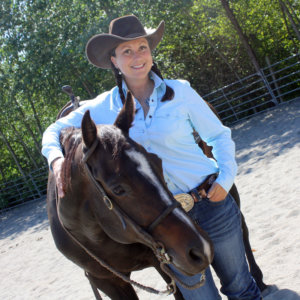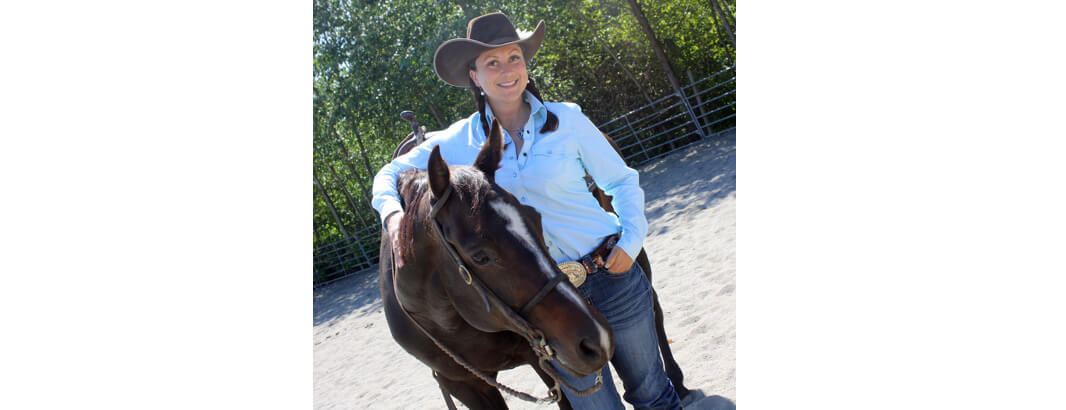Seven Tips to Maintaining a Healthy Partnership
by Allison Trimble, Willfully Guided Horsemanship

The relationship between trainer and owner/client is a very important one. Everyone needs help meeting their horsemanship goals and, for many people, the easiest way to do this is by keeping their horse in training and taking lessons, or having the trainer show the horse for them. This is an expensive game. I see a lot of turnover throughout the industry that I believe would be avoided if there was a better understanding between the trainer and client.
I have the unique perspective of being first a non-professional and then a professional trainer, so I know what it is like to be on each side of the equation. If your horse is in training, here are a few tips to help make the experience a positive one.
- The horse means the world to an owner who is spending a significant portion of their disposable income on training/boarding—somewhere in the ballpark of $1,000 a month, more if the horse is being shown. However, it is important to remember that only a small portion of the money spent actually makes it to the trainer—approximately $300 a month, after overhead. That does not include other expenses the trainer has such as advertising.
- For your trainer, this is their profession. That may seem obvious, but in the horse industry, in particular, people easily blur the lines between friendship and business. This is an expensive activity for both the client and trainer. Years, and time and money have been spent by the trainer to become proficient. Expect to pay for it. Time is valuable and there is never enough of it. Respect that. Be appreciative if you have the sort of trainer who makes time for you, but understand when they can’t use it just shooting the breeze. Most trainers hustle just to keep business afloat in the current economy.
- Pay your bill on time. Again, this seems obvious, but to run a training operation the trainer has fixed expenses when there are horses in training. This means that the mortgage/rent, hay, bedding, labor bills come due, and all it takes is a couple of late paying clients to get a trainer in a bind. A financially stressed person is never going to perform as well as they could, and this is true in horse training as well. I have clients who show up at the first of the month with check in hand and love to see those people. I have also had clients drag their feet paying me. When there is a stack of bills due on my desk, it is challenging to not be resentful toward them.
- If you don’t like the way a person trains your horse, or interacts with you, don’t do business with them. That said, this is how they feed their family. You have the right to disagree and/or be unhappy with your experience, but keep “sour grapes” to yourself. Avoid partaking in the gossipy nature of the horse industry and helping to damage a trainer’s career. Do what is best for you and your horse, but be thoughtful about your words.
- There is a proper way to leave a barn. As a trainer, having clients sneaking around with other trainers is embarrassing and a bit of a dig on you professionally. If you want to ride with multiple trainers or leave a barn and still maintain a healthy relationship with your former trainer show respect in your departure. Be transparent and let them know what you are doing. Don’t be the sort of client who suddenly shows up at a horse show with a new trainer when the old one had no idea. You can quickly become an undesirable client. In a tight industry, poor communication and sneaky behavior affects everyone.
- There is a limit to the number of horses one trainer can maintain on their own, between 10 and 12 for most folks. That is an income of roughly $3000 a month for a decent-sized program. That is not much. To have a better business, trainers hire assistants. This helps, but adds to the overhead. It can be very difficult to keep a training business going for this reason. To make additional income, trainers earn day fees at horse shows, hauling fees and horse sale commissions. These expenses are not robbery, they are honest ways horse trainers make a living. If you can’t afford to do them that is fine, but don’t expect to get these services for free or complain about the cost involved.
- Lastly, remember that any trainer will cost you money—the quality one and the hack. Find someone who has a good record, a variety of clients, healthy happy horses, and a way of communicating that suits you.
Published September 2012 Issue

Allison Trimble is a Realtor® specializing in equestrian properties, farm and ranch properties, and residential real estate. She’s a former horse trainer, and a current owner, breeder, and non-pro competitor in cow horse and reining events. For many years, Allison wrote a monthly column for The Northwest Horse Source.
Learn more at www.allisonblakerealestate.com






